Protect Your Trail
Advocacy
Whether on the footpath or on Capitol Hill, obstacles arise every day that threaten the Appalachian Trail. We’re here to protect it. Learn how the ATC stands up for the Trail and its surrounding landscape — and how you can help.
Stewards of a National Treasure
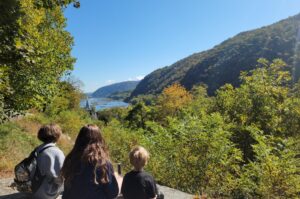
Photo by Laura “Wildflower” Gosnold in Harpers Ferry, WV
The Appalachian National Scenic Trail is a unique unit of the National Park Service. It is a location, a destination, a gateway to the wild and scenic Appalachian Mountains, and a pathway connecting 14 states and millions of residents, visitors, and volunteers. Every person who steps onto the Trail, whether for a few hours or multiple months, has a different experience. The ATC is committed to protecting and enhancing the Trail, strengthening our local communities, and conserving the A.T. landscape.
A.T. Legislative Priorities

America the Beautiful Act
Created in 2020 as part of the Great American Outdoors Act, the National Parks and Public Legacy Restoration Fund (LRF) provides funding to address the maintenance backlog in National Parks and other federally managed lands. With the LRF expiring in 2025, the ATC supports the passage of the America the Beautiful Act to extend the LRF and increase funding for the A.T. and public land management.

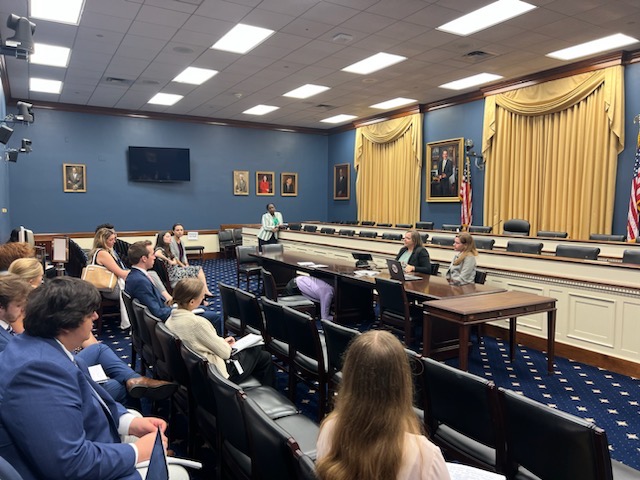
Congressional Appalachian National Scenic Trail Caucus
The non-partisan A.T. Caucus works directly with the ATC to help Members of Congress who are enthusiastic about the Trail stay informed on the latest issues and know which bills and hearings in Congress are of special importance to the Trail and our A.T. Communities from Maine to Georgia.


Support Roadless Areas in National Forests
The U.S. Department of Agriculture has announced plans to rescind the 2001 Roadless Area Conservation Rule, which protects 44.7 million acres of national forest lands. Nearly half of the Appalachian Trail runs through the National Forest System lands, where roadless areas safeguard views, wildlife, and backcountry hiking. This rollback, moving forward without adequate science or stakeholder input, could undermine the Trail’s cooperative management and affect the visitor experience.

Become an Advocate for the A.T.
Share why the Appalachian Trail is so important to you; why its natural, scenic, cultural and historic qualities deserve strategic and thoughtful protection; and that you support legislation that benefits the conservation of our public lands.
Public Lands Maintenance and Management
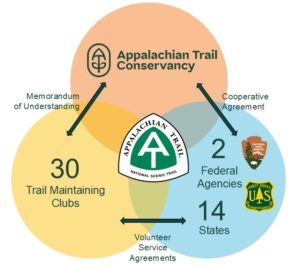 Since 1925, the Appalachian Trail Conservancy has been leading the management and conservation of the Appalachian National Scenic Trail. To ensure the A.T. treadway, corridor, and landscape are maintained and conserved, the ATC operates within the Cooperative Management System (CMS). The A.T.’s CMS is often described as a “three-legged stool” because it relies on the balancing and sharing of responsibilities by the land managers (the National Park Service, USDA Forest Service and state agencies), the ATC, and the 30 A.T. Maintaining Clubs and over 5,000 volunteers.
Since 1925, the Appalachian Trail Conservancy has been leading the management and conservation of the Appalachian National Scenic Trail. To ensure the A.T. treadway, corridor, and landscape are maintained and conserved, the ATC operates within the Cooperative Management System (CMS). The A.T.’s CMS is often described as a “three-legged stool” because it relies on the balancing and sharing of responsibilities by the land managers (the National Park Service, USDA Forest Service and state agencies), the ATC, and the 30 A.T. Maintaining Clubs and over 5,000 volunteers.
The National Trail System Act, which made the A.T. one of first two National Scenic Trails, enabled the Secretary of the Interior to empower non-governmental organizations, like the ATC to do substantive work on national trails in ways not usually allowed on federal lands.
Our Trail’s maintenance doesn’t just impact its 2,197.4 miles from Georgia to Maine. The A.T. runs through 8 National Forests (~50% of the Trail), 6 National Park units (~40% of the Trail), 1 U.S. Wildlife Refuge, and State-administered public lands in nearly every State it crosses through (~10% of the Trail). We see every day how broader public lands management decisions impact different sections of the Trail, communities along it, and the ability of people to hike it.
The ATC advocates for policies and legislation that improve access, conservation, stewardship and funding for the A.T. and public lands.

Promoting Rural Economic Development
The vitality of the A.T. is innately connected to the nearby town and communities where many of its most dedicated users call home. Through our A.T. Community™ program, the ATC works with the residents of the A.T. Landscape to promote local economic development through tourism, outdoor recreation, access to the Trail, and amenities for Trail users. We also work on the federal level to ensure that the A.T. towns that many of us call home get the attention and resources they need.
Read More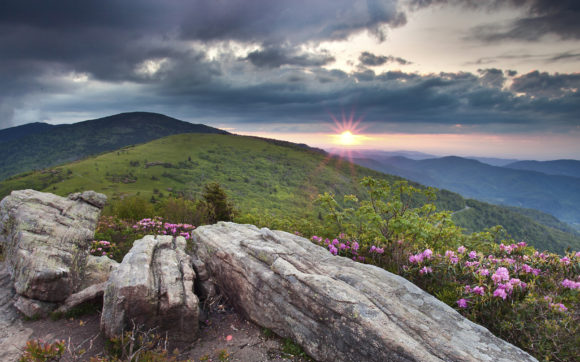
Protecting the A.T. Landscape
The A.T. is the last remaining, continuous wilderness corridor and the backbone of conservation in the eastern U.S. While the entirety of the Trail is protected, not all of what is seen from its peaks is safe from development. The ATC advocates on the federal level for legislation and programs to preserve the A.T. Landscape. Helping local partners advocate for shared conservation goals as well as fighting to make sure A.T. Communities can meaningfully participate in decisions impacting the Trail, Corridor, and Landscape, is foundational to our advocacy philosophy.
Read More
Public Participation in Development
 When Benton MacKaye envisioned the Appalachian Trail over 100 years ago, he intended a realm that provides “a better, wider place in which to live a better, wider life.” Neither he nor the hundreds of volunteers who worked feverishly to establish a continuous footpath from Georgia to Maine could have imagined the incredible technological changes that America would undergo or the energy infrastructure siting and construction processes Trail advocates must now navigate. The history of the Trail has many lessons on how insufficient public participation in decision-making has led to undesirable outcomes for the Trail and our communities.
When Benton MacKaye envisioned the Appalachian Trail over 100 years ago, he intended a realm that provides “a better, wider place in which to live a better, wider life.” Neither he nor the hundreds of volunteers who worked feverishly to establish a continuous footpath from Georgia to Maine could have imagined the incredible technological changes that America would undergo or the energy infrastructure siting and construction processes Trail advocates must now navigate. The history of the Trail has many lessons on how insufficient public participation in decision-making has led to undesirable outcomes for the Trail and our communities.
Because of our history and our commitment to ensuring the health and protection of the A.T. and its landscape, the ATC strongly believes that public participation in major infrastructure decisions is critical to ensuring that the most public good is delivered. For governmental entities like the Federal Energy Regulatory Commission (FERC), their experience is often with the technical and engineering aspects of a project, and not with the impact on natural, cultural, or community resources.
That’s why ATC has worked with A.T. champions to secure the introduction of legislation that protects scenic viewsheds and ensures opportunities for public engagement. The A.T. was never intended to stop all infrastructure development, but because it exists to protect the scenic, natural, cultural, and historic values of the Appalachian Mountains, we believe it’s important to make sure that the A.T. and the people and communities of the A.T. Landscape are heard and considered when development decisions are made.
Infrastructure development is often contentious. The ATC works hard to positively contribute to decision-making by providing expertise and looking at issues of concern from multiple sides. While it is usually impossible to avoid negative externalities, it’s usually possible to minimize negative consequences with collaboration. We need roads to drive on, transmission lines to power our devices, houses to live in, and energy to heat our homes. How we as a society decide to build infrastructure is important, and why the ATC believes that our perspective and experience can help provided needed services while protecting the A.T. experience.
Federal Funding for the A.T. and Public Lands
Land and Water Conservation Fund
The Land and Water Conservation Fund (LWCF) Act was signed in 1965 to ensure that offshore energy development also promoted conservation. The Act directs $900 million into the Fund, which is then split 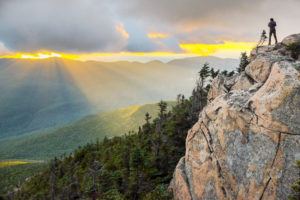 between federal land managing agencies and every state. Since 1965, much of the land protected by the National Park Service, USDA Forest Service, or any of our 14 states that includes the A.T. has been funded in part by the LWCF. From the Highlands of Roan to the Hudson Valley, the LWCF is essential to protecting the scenic, natural, cultural, and historical values of the Appalachian Mountains to unlock maximum recreational potential.
between federal land managing agencies and every state. Since 1965, much of the land protected by the National Park Service, USDA Forest Service, or any of our 14 states that includes the A.T. has been funded in part by the LWCF. From the Highlands of Roan to the Hudson Valley, the LWCF is essential to protecting the scenic, natural, cultural, and historical values of the Appalachian Mountains to unlock maximum recreational potential.
The Dingell Act of 2019 permanently authorized the LWCF after decades of advocacy, including by ATC! Many laws are written to exist for a certain period to allow for Congressional oversight and prompt any needed changes. The permanent authorization of the LWCF in the Dingell Act (named for John D. Dingell, who served in Congress for over 50 years and wrote the LWCF Act) reflects the importance and value of the LWCF.
With the enactment of the Great American Outdoors Act (GAOA) in 2020, Congress permanently funded the LWCF. Although the LWCF Act deposited $900 million per year into the Fund, it didn’t require that money be appropriated for conservation purposes. Under the GAOA, that money, without fail, is sent to the federal and state land management agencies to provide for land protection, as well as facility development by the states. With this certainty, both our federal and state managers have been able to better budget for land protection in the A.T. Landscape.
The ATC is a member of the LWCF Coalition. More info on the LWCF can be found at: https://lwcfcoalition.org/
Legacy Restoration Fund
The National Parks and Public Lands Legacy Restoration Fund (LRF) was created by the GAOA in 2020 and is authorized until the end of federal Fiscal Year 2025 (September 30, 2025). The LRF was created to address the backlog of deferred maintenance for facility assets on land managed by the National Park Service (NPS), USDA Forest Service (USFS), Bureau of Land Management, U.S. Fish and Wildlife Service, and Bureau of Indian Education. Regular maintenance becomes “deferred maintenance” when wear and tear or damage accumulates faster than can be repaired, often due to availability of funding. The backlog of deferred maintenance across all the LRF’s covered agencies is approximately $40 billion.
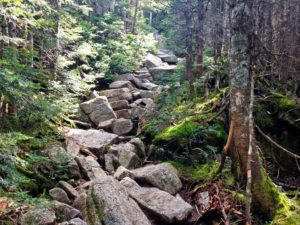
On the A.T., the treadway itself, privies, shelters, water features and other human-made amenities are called “facility assets”. Although A.T. volunteers perform most of the physical labor needed to keep the Trail in working order, volunteers do not fund everything out-of-pocket. ATC and individual Clubs fundraise for projects and to ensure the provision of services, but cooperative management relies on federal appropriated dollars to do everything from purchasing wood to build shelters to paying for helicopters to drop project materials on mountaintops. Without these federal dollars to provide for facility maintenance, the A.T. would be in much worse shape.
The A.T. has and will continue to benefit from the LRF, especially if it reauthorized. The ATC is currently planning treadway improvement work with LRF funds in New England where one/third of the total deficiencies exist on the Trail. The facility infrastructure needs of the A.T. and our public lands are significant, which is why we are working when we can to promote desired use conditions through facility redesign or removal. Learn more by exploring the Department of the Interior’s GAOA page and the USDA Forest Service’s GAOA page.
The LRF has been steadily chipping away at this backlog, but the work is far from done. In order to maintain access and good repair to our special places, the LRF needs to be extended, which is why ATC is a proud supporter of the America the Beautiful Act. You can read ATC CEO Sandra Marra’s statement of support here. We are working with our Senate champs, including A.T. Senators King (I-ME) and Warner (D-VA) on moving this important legislation and with our House champs on getting a version introduced into that chamber.
